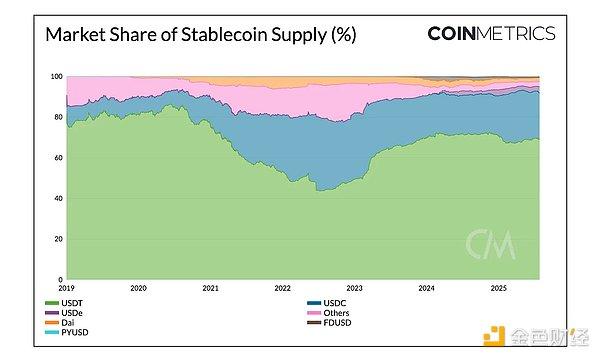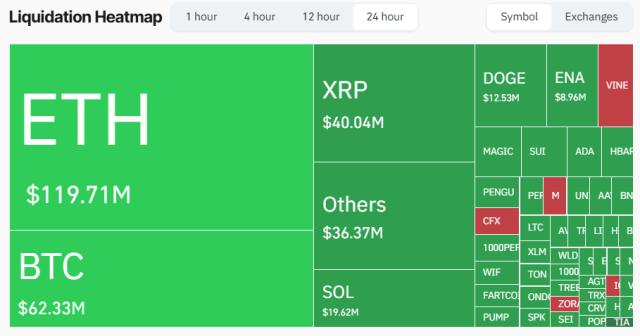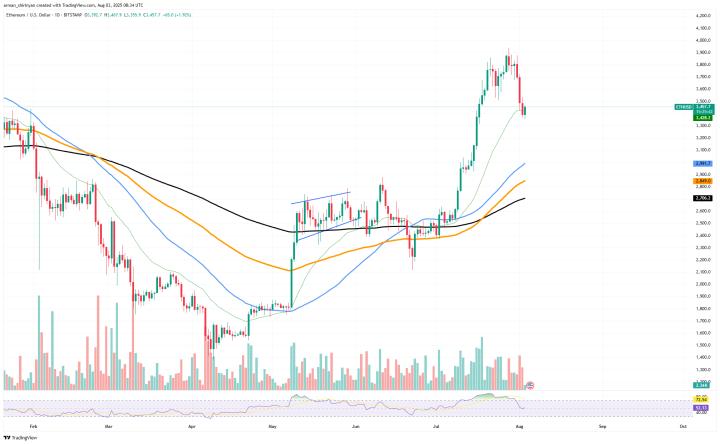Author: Tanay Ved
Source: Coin Metrics
Translation: Shan Ouba, Jinse Finance
Key Points:
Bitcoin's realized market cap breaks through $1 trillion, reflecting the deepening capital commitment and confidence of long-term holders, while the total market cap of the entire crypto market approaches $4 trillion.
Demand for Bitcoin (BTC) and Ethereum (ETH) has exceeded new coin issuance, primarily driven by continuous spot ETF inflows and ongoing corporate treasury accumulation.
Market leadership is beginning to spread, with Ethereum showing relative strength, and Altcoins like SOL and XRP attracting more funds due to rising spot trading volumes.
The GENIUS Act established the first federal regulatory framework for fiat-pegged stablecoins in the US, bringing regulatory clarity and creating a larger participation and competitive environment for the stablecoin market worth over $250 billion.
Introduction
The crypto asset market is approaching the $4 trillion mark for the first time, a significant milestone in the industry's history. This rally stems from the convergence of multiple structural and cyclical forces: from continuous spot Bitcoin and Ethereum ETF inflows, to accelerated accumulation by crypto asset treasury companies, to key regulatory breakthroughs like the GENIUS Act. It can be said that the "tailwinds" driving the crypto market are strengthening.
This article will break down the key market forces and on-chain capital flows driving this expansion.
Bitcoin's Realized Market Cap Breaks $1 Trillion, Market Activity Continues to Expand
Bitcoin (BTC) hit a new high of $123,000, with total market cap rising to $2.38 trillion, and its realized market cap (the total value calculated by the last on-chain transfer price of each Bitcoin) breaking $1 trillion for the first time. This data indicates that even at high levels, significant capital continues to enter the market, highlighting growing confidence in Bitcoin's long-term role as a global asset, especially against the backdrop of continuous ETF inflows and institutional interest.
[Image]
Market activity also shows early signs of "leadership spread". Ethereum (ETH) has begun to show relative strength, with the ETH/BTC rate rising 73% since May, breaking $3,900. This momentum is supported by record ETF inflows, accelerated corporate treasury adoption, and the positive impact of the GENIUS Act on the Ethereum ecosystem, especially stablecoins.
[Image]
This "spread" trend is also reflected in spot trading data: not only is BTC trading volume still strong, but ETH and major Altcoins like SOL and XRP have seen significant trading volume growth in recent weeks. Meanwhile, Bitcoin's market dominance has dropped to 59%, with Altcoins' total market cap approaching $1.6 trillion. Although there are initial signs of "leadership spread", it remains to be seen whether this trend will continue.
The following table summarizes market statistics for the top 20 tokens by market cap, excluding stablecoins and other on-chain derivatives:
[Image]
Accelerating Demand: Dual Drivers from ETFs and Corporate Treasuries
One key driver of Bitcoin (BTC) and Ethereum (ETH) demand growth is spot ETFs. After a brief slowdown in March and April, Bitcoin ETF inflows reaccelerated in May, bringing total US spot Bitcoin ETF holdings to over 1.27 million BTC (about 6.4% of total supply). BlackRock's iShares Bitcoin Trust (IBIT) remains the largest holder, currently holding approximately 735,000 BTC (valued at around $87 billion).
[Image]
Ethereum (ETH) is experiencing similar demand surge. In recent weeks, spot Ethereum ETFs have seen consecutive net inflows, sometimes even exceeding Bitcoin's inflows. Total ETH ETF holdings have reached 5.8 million ETH, about 4.8% of total supply, with most growth concentrated in recent months—despite these ETFs being launched over a year ago.
ETH demand is also supported by increasingly Ethereum-focused corporate treasuries, causing ETH accumulation to exceed new issuance. Unlike BTC-holding corporate treasuries, ETH treasuries generate native yields through Staking and DeFi, a model now extended to other major token ecosystems like Solana (SOL), TRON (TRX), and Ethena (ENA).
On-Chain Holdings: Divided by Address Balance
[Image]
As shown in the image, BTC's small holders (<1 BTC) and large holders (1,000–10,000 BTC) have gradually reduced their supply over the past year, indicating the market is entering a distribution phase as prices rise. In contrast, ETH shows signs of re-accumulation, especially among large holders (10,000–100,000 ETH), whose supply proportion has risen to over 22%. The supply of small ETH holders (<1 ETH) continues to rise, a trend uninterrupted since 2021.
GENIUS Act Opens New Era for Stablecoins
The GENIUS Act was officially signed into law on July 18, establishing the first federal regulatory framework for fiat-pegged stablecoins in the US. The act creates a fair competitive environment for stablecoin issuers, requiring:
Full reserve backing
Reserve assets must be low-risk, short-term US Treasury bonds or cash
Periodic audits
Issuers must obtain a license
Similar to the Bitcoin spot ETF approval, this brings regulatory clarity and legitimacy to the US dollar-denominated stablecoin market.
Recently, stablecoin supply growth has notably accelerated, as seen in the 30-day rolling supply change, with total supply now exceeding $255 billion.
[Image]
This regulatory framework is expected to enhance public trust in fiat stablecoins, lower barriers for new entrants, and bring more competition to the payment market. From existing issuers like Tether and Circle to potential new participants like regulated banks and fintech companies, this competition is likely to drive down transaction costs, improve payment experiences for consumers and businesses, and further strengthen global demand for the US dollar.

Among existing stablecoin issuers, Circle and Paxos seem most likely to meet the requirements of the GENIUS Act, as USDC and PayPal USD (PYUSD) have long adopted full reserve support and regularly provide audit reports. Circle is actively applying to the Office of the Comptroller of the Currency (OCC) for a federal trust bank license to fully comply with the GENIUS Act and provide custody services to institutional clients. Other major issuers are also restructuring to meet the new legal requirements.
For example, the federally licensed crypto bank Anchorage Digital has partnered with Ethena Labs to launch USDtb through its stablecoin issuance platform. Since Anchorage provides federal regulation and reserve management, this makes Ethena's USDtb one of the first stablecoins fully compliant with the GENIUS Act. This issuance model provides a one-stop compliance solution for projects wishing to continue operating in the U.S. market.
In contrast, Tether (USDT), which occupies about 68% of the stablecoin market, faces a more complex adjustment path. USDT has long operated outside the U.S. regulatory system, with reserve assets including assets that do not meet GENIUS standards, such as Bitcoin and precious metals. In response, Tether plans to launch a compliant stablecoin for institutional payments and interbank settlement, fully adhering to the GENIUS Act requirements. The existing $162 billion USDT will continue to operate overseas, primarily serving emerging markets.
Stablecoin issuers have three years to complete the GENIUS Act compliance requirements. After this, only stablecoins meeting GENIUS standards will be supported by exchanges and custody institutions, providing ample adjustment time for all parties.
Conclusion
Recently, the total market capitalization of the crypto market has surged to $4 trillion, reflecting growing market confidence in the entire asset class. Demand from ETFs and corporate treasuries continues to exceed new supply, further improving the supply and demand structure of BTC and ETH. Valuation indicators such as Bitcoin's Market Value to Realized Value (MVRV) suggest that the market is not yet overheated.
Although the market is still dominated by strong ETF inflows and long-term holders, market leadership is gradually showing signs of dispersing.
Moreover, the passage of the GENIUS Act marks a key turning point in U.S. crypto regulation: it not only brings a clear regulatory framework for stablecoins but also paves the way for competitive landscape and deeper integration with traditional finance. Despite potential short-term volatility, the combination of solid structural demand, clear regulatory prospects, and expanded participant range suggests that the market will continue to strengthen in the future.








